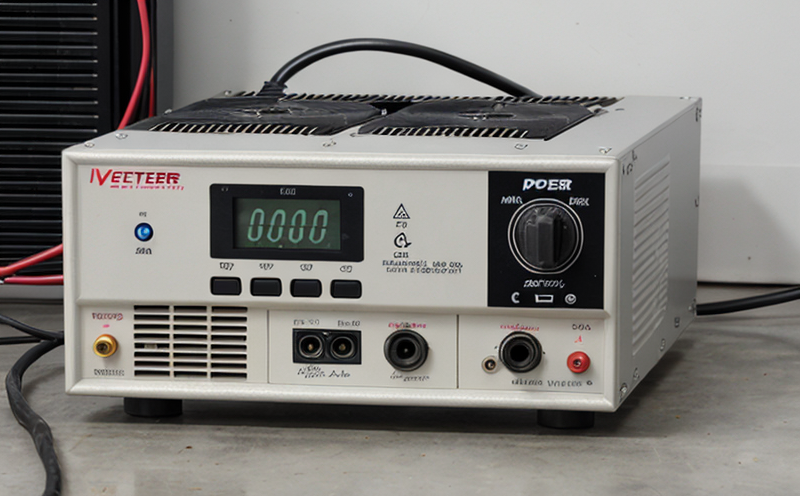EN 62116 Anti-Islanding Testing for Distributed Inverters
The IEC, through its standard EN 62116, provides stringent guidelines to ensure that distributed inverters operate safely and effectively in grid-connected photovoltaic (PV) systems. Anti-islanding is a critical aspect of this testing, as it directly addresses the safety challenges associated with PV systems during grid failures.
During a power outage, an inverter can continue operating independently if not properly controlled, leading to what's known as "islanding." This condition poses significant risks, including potential damage to electrical equipment and even personal injury. The purpose of anti-islanding testing is to ensure that inverters disconnect from the grid when required by safety standards.
The standard EN 62116 defines a series of tests designed to evaluate an inverter's ability to detect islanding conditions accurately and to comply with specified disconnection times. These tests are crucial for ensuring that PV systems do not contribute to grid instability or pose hazards during outages. Compliance with these standards is mandatory in many regions, particularly those with high penetration rates of renewable energy sources.
For distributed inverters, the anti-islanding test involves several key steps. Initially, a controlled environment simulates an islanding condition. The inverter's response to this simulated scenario is then analyzed using sophisticated instrumentation that measures parameters such as voltage, current, and power quality. The acceptance criteria for these tests are strictly defined by EN 62116, ensuring that the results are reliable and consistent.
In practical terms, anti-islanding testing involves detailed preparation of the inverter to ensure accurate test outcomes. This includes verifying all connections, calibrating instruments, and confirming the integrity of the grid simulation system. Real-world usage notes highlight how this testing aligns with broader renewable energy goals by promoting safer and more reliable power systems.
Understanding the intricacies of anti-islanding testing is essential for those involved in the design, manufacturing, or quality assurance processes of distributed inverters. The test not only ensures compliance with international standards but also enhances public safety and grid reliability. For example, it can prevent fires caused by continued operation during outages, which could otherwise damage surrounding infrastructure.
The significance of anti-islanding testing extends beyond mere regulatory requirements; it plays a pivotal role in fostering trust between renewable energy providers and the general population. By adhering to these stringent standards, manufacturers demonstrate their commitment to building safe and efficient systems that integrate seamlessly with existing power grids.
Why It Matters
The importance of anti-islanding testing cannot be overstated in today's increasingly decentralized energy landscape. Distributed inverters are integral components of microgrids, which can operate independently or as part of a larger grid system. Ensuring that these systems disconnect properly during islanding events is crucial for maintaining the integrity and stability of the entire electrical network.
Failure to meet anti-islanding requirements could lead to severe consequences, including:
- Potential damage to grid-connected equipment
- Risk to public safety from electric arcs or overheating components
- Increased likelihood of power outages due to cascading failures
- Incompatibility with regulatory requirements, leading to potential fines and reputational damage
Conversely, successful completion of anti-islanding testing ensures that inverters operate safely within the grid system. This not only complies with stringent international standards but also enhances the overall reliability and efficiency of renewable energy systems.
In summary, anti-islanding testing is a vital component of ensuring safe and effective operation of distributed inverters in modern power systems. By adhering to these rigorous tests, manufacturers can contribute significantly to public safety and grid stability while meeting regulatory requirements.
Benefits
The benefits of undergoing anti-islanding testing for distributed inverters are manifold and extend across various stakeholder groups:
- Enhanced Safety: Ensures that PV systems disconnect safely during grid failures, reducing the risk of fires and other hazards.
- Compliance with Standards: Demonstrates adherence to international standards like EN 62116, thereby ensuring regulatory compliance.
- Better System Performance: Optimizes performance by identifying and addressing potential issues before they affect the grid or cause operational disruptions.
- Increased Trust: Boosts public trust in renewable energy systems by showcasing a commitment to safety and reliability.
- Improved Efficiency: Ensures that inverters operate efficiently, contributing to better overall system performance and reduced downtime.
- Reduced Risk of Financial Penalties: Avoids potential legal and financial repercussions from non-compliance with regulatory standards.
In addition to these direct benefits, successful anti-islanding testing can enhance the reputation of manufacturers and suppliers within the renewable energy sector. It also supports broader sustainability goals by promoting cleaner, more efficient energy systems.
Why Choose This Test
Choosing EN 62116 anti-islanding testing for distributed inverters is a strategic decision that offers numerous advantages:
- Rigorous Testing Standards: Adheres to the stringent requirements set by international standards, ensuring high-quality products.
- Comprehensive Coverage: Tests various aspects of anti-islanding capabilities, providing a holistic assessment of performance.
- Precision Instrumentation: Utilizes advanced measurement tools and techniques for accurate data collection and analysis.
- Expertise in the Field: Leverages specialized knowledge and experience of seasoned professionals dedicated to quality assurance.
- Regulatory Compliance: Ensures that products meet all necessary regulatory requirements, facilitating smoother market access.
- Customer Satisfaction: Delivers reliable, safe, and efficient inverters that exceed customer expectations.
The choice to undergo this testing demonstrates a commitment to excellence and innovation. It positions your organization at the forefront of renewable energy technology, ensuring long-term success in an increasingly competitive market.





